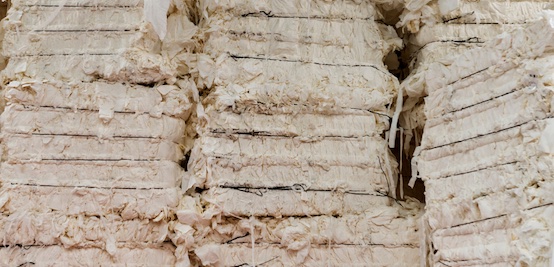#Market Analysis & Forecasts
Insights on the Textile Coating Global Market to 2026 - by Type, Application, Technology, Coating Method and Region
The global textile coating market exhibited moderate growth during 2015-2020. Looking forward, the publisher expects the market to grow at a CAGR of 3.3% during 2021-2026.
Keeping in mind the uncertainties of COVID-19, we are continuously tracking and evaluating the direct as well as the indirect influence of the pandemic on different end use industries. These insights are included in the report as a major market contributor.
Textile coating refers to the process of depositing various chemicals and resins either on one or both sides of a textile substrate. These compounds are usually added to enhance the physical properties of the textile, such as resistance to fire, water, abrasion, soil and stains, along with heat stability and breathability. Some of the most common types of textile coatings include thermoplastics, such as polyvinyl chloride, polyurethane and acrylics, and thermosets, such as styrene-butadiene, natural, nitrite and butyl rubber. They are primarily used in the manufacturing of airbags, conveyor belts, barrier materials, hospital equipment and protective clothing and find extensive applications across the aerospace, transportation, construction and medical industries.
Rapid industrialization and increasing demand for geotextiles across the globe are among the key factors driving the growth of the market. In line with this, there is a widespread adoption of waterproof, premium quality and heat-resistant fabrics for the manufacturing of faux leather, packaging and sports clothing products. Increasing industrial quality standards and requirements are further contributing to the adoption of textile coatings. Various technological innovations, including the development of advanced coating technologies, such as spray coating, nanoscale and plasma technologies, are also contributing to the market growth. These coatings provide anti-bacterial and self-healing properties to the polymers, which is resulting in the increasing utilization of the process across industries. Other factors, including its extensive application for the manufacturing of home furnishings, medical equipment and agricultural products, along with significant growth in the textile industry, are projected to drive the market further.
Companies Mentioned
• BASF SE
• Covestro AG
• Clariant AG
• Tanatex Chemicals B.V.
• The Lubrizol Corporation
• Solvay
• Huntsman Corporation
Key Questions Answered in This Report:
• How has the global textile coating market performed so far and how will it perform in the coming years?
• What are the key regional markets?
• What has been the impact of COVID-19 on the global textile coating market?
• What is the breakup of the market based on the type?
• What is the breakup of the market based on the application?
• What is the breakup of the market based on the technology?
• What is the breakup of the market based on the coating method?
• What are the various stages in the value chain of the industry?
• What are the key driving factors and challenges in the industry?
• What is the structure of the global textile coating market and who are the key players?
• What is the degree of competition in the industry?
Key Topics Covered:
1 Preface
2 Scope and Methodology
3 Executive Summary
4 Introduction
4.1 Overview
4.2 Key Industry Trends
5 Global Textile Coating Market
5.1 Market Overview
5.2 Market Performance
5.3 Impact of COVID-19
5.4 Market Forecast
6 Market Breakup by Type
7 Market Breakup by Application
8 Market Breakup by Technology
9 Market Breakup by Coating Method
10 Market Breakup by Region
11 SWOT Analysis
12 Value Chain Analysis
13 Porters Five Forces Analysis
14 Price Indicators
15 Competitive Landscape
15.1 Market Structure
15.2 Key Players
15.3 Profiles of Key Players
For more information about this report visit
https://www.researchandmarkets.com/r/k6y1hg















